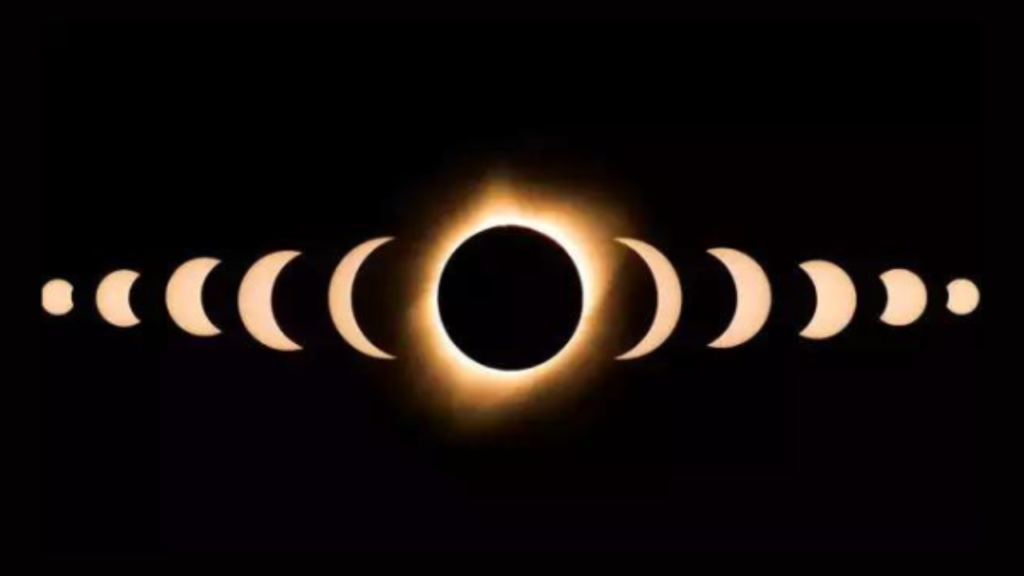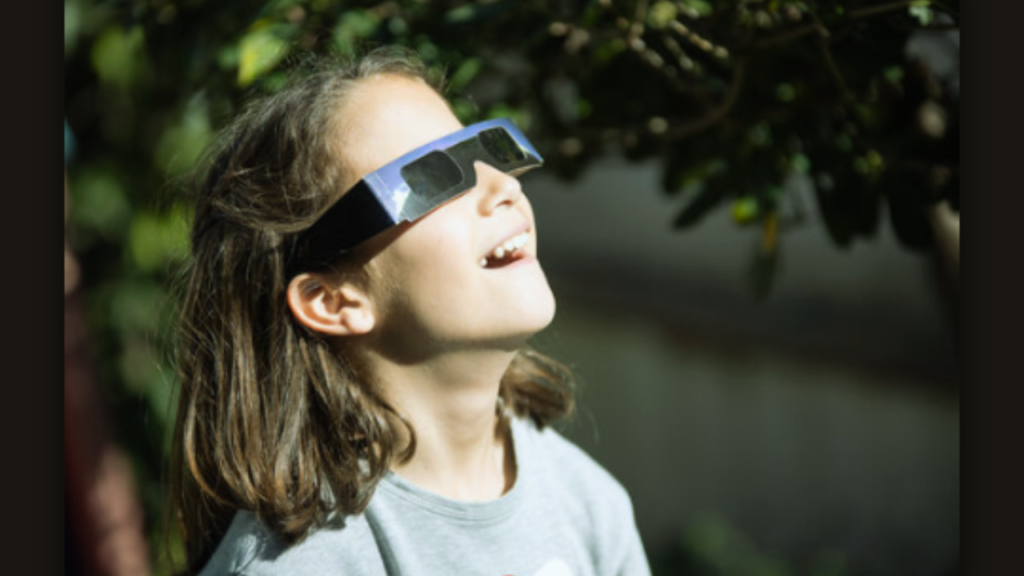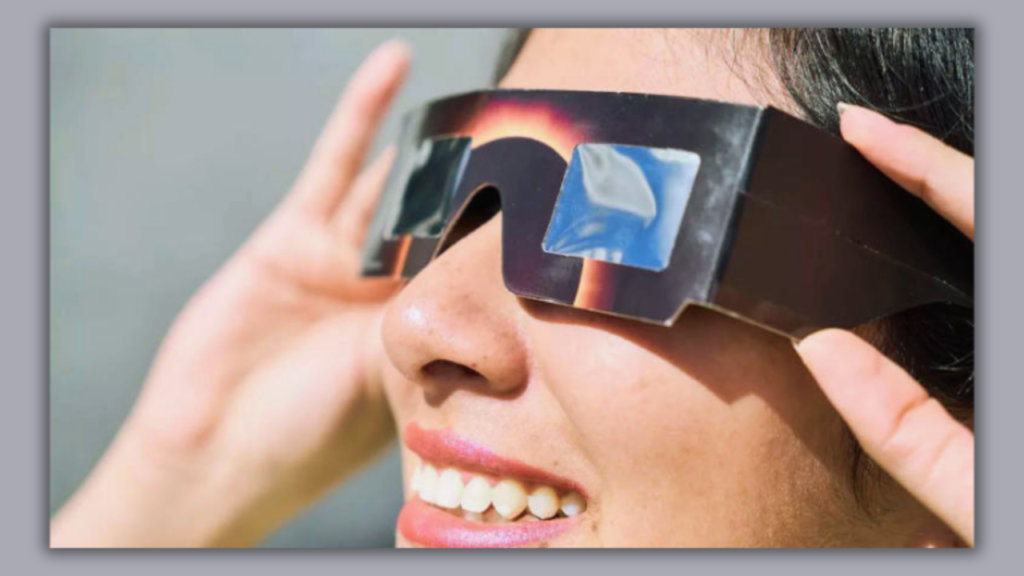When the moon moves in front of the sun and blocks out all or part of the light, it is called a solar eclipse, or Surya Grahan. For centuries, people have been captivated by solar eclipse surya grahan which are considered to be important astronomical occurrences.
A solar eclipse surya grahan is by far one of the most amazing phenomena, with tales abounding about it and agencies and elders offering wise counsel.
A solar eclipse surya grahan what is it?
When the moon passes directly in front of the sun during its orbit around the earth, a solar eclipse surya grahan happens. Because of the moon’s alignment, the earth receives its shadow, which briefly causes darkness during the day. There are two types of solar eclipses: partial and total. It all depends on where it happens, how much of it is covered, and how far the sun, moon, and earth are from each other.
When is there an solar eclipse surya grahan?

Though they don’t happen very often anywhere, solar eclipses do happen occasionally. To put it simply, a solar eclipse surya grahan occurs when the Earth’s orbit around the sun crosses over the moon’s orbit, bringing all three bodies into straight alignment. Only when the moon is between the Earth and the sun during the new moon phase can there be a solar eclipse.
Additionally, April 8th is scheduled to bring about this year’s first solar eclipse surya grahan, or Surya Grahan, in which the moon will totally obscure the sun.
Will India be able to see it?
Total, partial, annular, and hybrid eclipses are the four different forms of solar eclipse surya grahan. Even though each of them is incredibly distinctive in its own right, they are not always visible from Earth. An eclipse’s visibility varies according to one’s geographic location. Sometimes, from some places, they might not be at all visible. At times, they might be visible in every country on Earth, and at other times, they might be visible only in a few.
India will not be able to see the first solar eclipse surya grahan of the year, a total eclipse scheduled for April 8. Only the United States, Canada, Mexico, and North America will be able to see this eclipse.
Different perspectives on eclipses

solar eclipse surya grahan, have been associated with a variety of myths and interpretations throughout history. A solar eclipse was thought to portend impending destruction, the wrath of gods, or attempts by enormous demons to devour the sun in order to end life as we know it in many ancient civilizations. As a result, people would begin to pray and ask for forgiveness whenever an eclipse occurred. When the eclipse passed, people interpreted it as a sign that their prayers had been heard by the gods.
In certain other cultures, people avoided going outside or eating during an eclipse out of concern that it would harm them or draw evil spirits trying to harm the sun god.
What is stated by NASA?
A total solar eclipse surya grahan will cross North America on Monday, April 8, 2024, going through Canada, the United States, and Mexico. Beginning over the South Pacific Ocean, there will be a total solar eclipse. The Pacific coast of Mexico will see totality first in continental North America if the weather is right, at approximately 11:07 a.m. PDT.

The path of totality continues through Mexico, crosses into Texas, then travels through Oklahoma before entering the United States. Arkansas Missouri Illinois Kentucky Indiana Ohio Pennsylvania New York Vermont Maine and New Hampshire. Small areas of Tennessee and Michigan will also be able to view partial eclipse phases. The eclipse is expected to cross through Quebec and enter southern Ontario, Canada. Prince Edward Island, Cape Breton, and New Brunswick.
The eclipse will leave North America at 5:16 p.m. NDT, crossing the Atlantic Ocean off the coast of Newfoundland, Canada.
NASA Issues Cautions
Without protective eyewear, it is unsafe to look directly at the sun, with the exception of the brief total phase of a total solar eclipse surya grahan during which the moon totally blocks the sun’s bright face. Without an appropriate solar filter, looking at any portion of the bright sun through binoculars, a telescope, or a camera lens can result in immediate and severe eye damage.
No specific brand of solar viewer is recommended by NASA. Suggested Actions During an Eclipse Even though the eclipse cannot be seen in India or anywhere else on the Asian subcontinent, we are gathering here some tips and advice on how to prepare for future eclipses.
Put on eye protection

Your eyes could be permanently damaged if you look directly at the sun during an eclipse. Make sure you wear solar viewing glasses or portable solar viewers to shield your eyes from harmful rays if you have an interest in space and are fascinated by eclipses and their observations.
Ensure that the lens and eyes of your device are protected with a solar filter. Avoid staring directly at the sun through binoculars or cameras without the proper filters.
If you’d like, enjoy it.
An amazing and uncommon sight is a solar eclipse surya grahan Thus, take some time, if your beliefs and thoughts allow it, to enjoy the wonders of the natural world and the universe, but make sure you take the necessary safety measures.
Avoid staring straight at the sun.
There is no way to overstate this! Beyond myths, beliefs, and superstitions, gazing at the sun during an eclipse for even a brief period of time can result in severe eye damage or even blindness. Always wear safety goggles or use indirect viewing techniques.
Never use devices without filters.
When using binoculars, a smartphone, or a camera to view an eclipse without the proper solar filters, you run the risk of damaging the equipment beyond repair and endangering your vision. Thus, make sure you have the appropriate tools..
Avoid looking for do-it-yourself fixes.
Although experimenting and exploring can be fascinating, avoid doing so when there is a risk to your safety or the safety of your camera or other equipment. Sunglasses, smoked glass, or CDs are examples of homemade filters that fail to offer enough protection against solar radiation and are therefore unsafe to use when watching a solar eclipse.
Remain calm
Though solar eclipses are the subject of numerous myths and legends, panicking is not the wisest course of action in the information era. An eclipse does not warrant panic or fear. The moon’s shadowing of the sun poses no threat as long as you observe certain precautions and remain informed.

